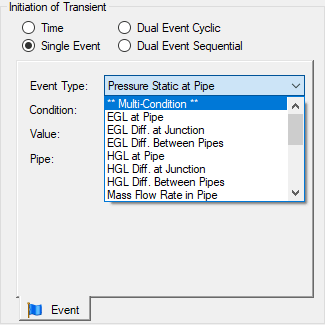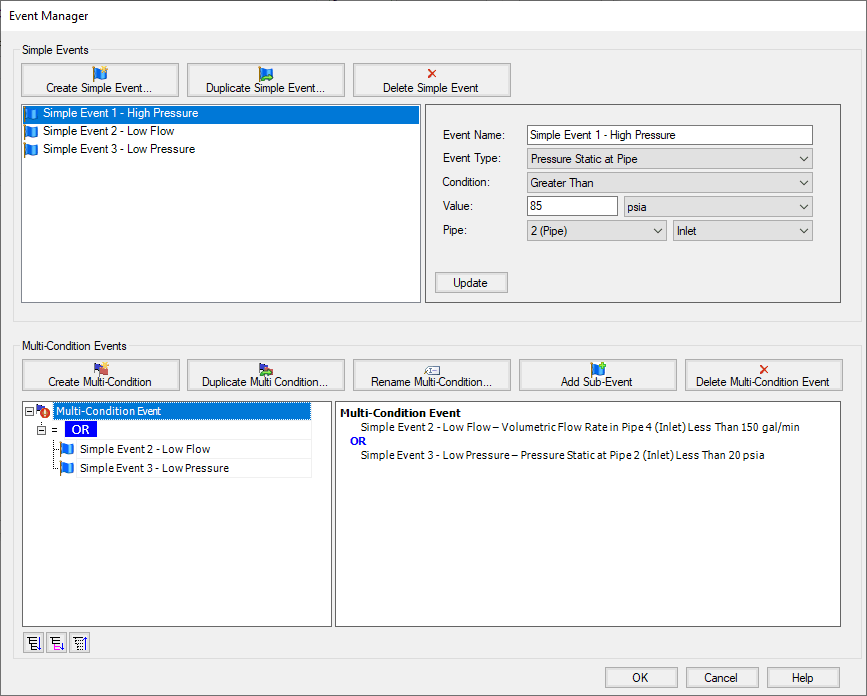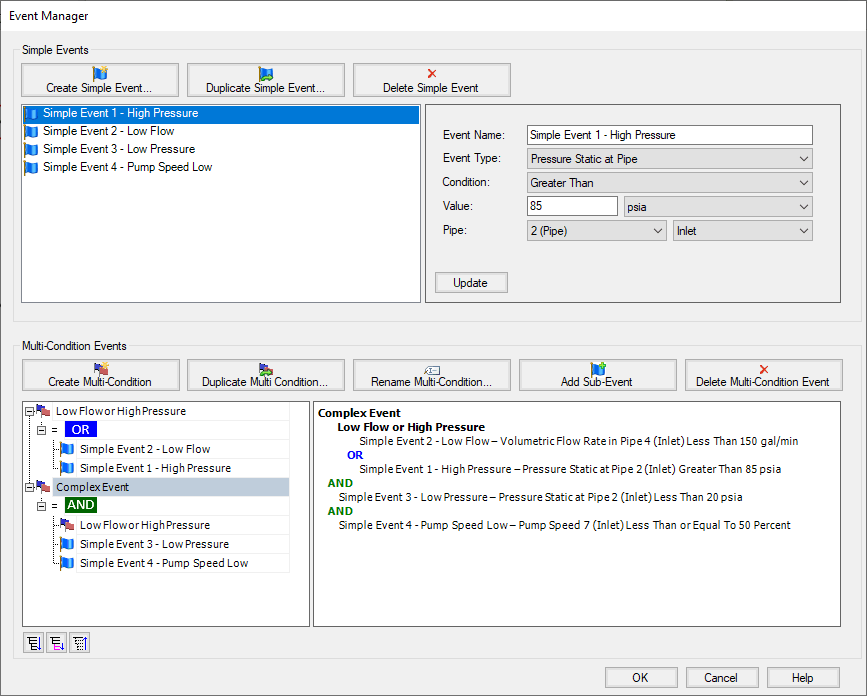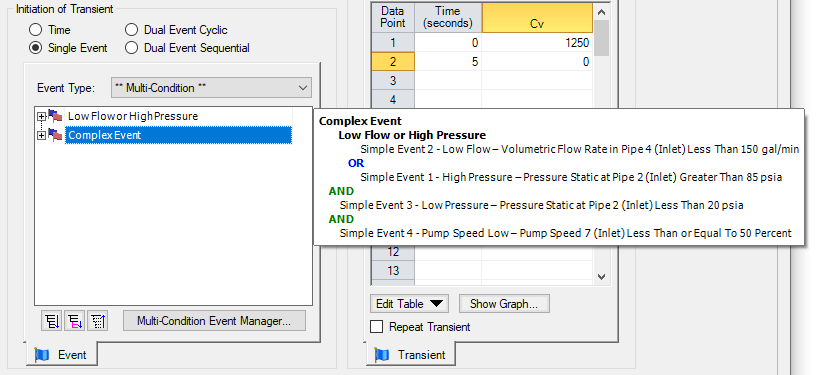AFT Blog
And, Not, Or - Starting Transient Events with Complex Logic
AFT Fathom XTS and AFT Impulse have long been able to start events like pump trips or valve closures when a certain condition is met in the system. For example, a valve can close when a tank is full, or a pump can trip when the flow is too low. However, complex systems often have multiple conditions that can cause an event. The pump may trip when the flow is too low OR the suction pressure is too low. The valve may only close when two tanks are full. AFT Fathom version 10 and AFT Impulse version 7 enhance the transient capabilities to allow the definition of these complex Multi-Condition Events.
Actions in a model such as a valve movement or pump trip can be started with an Event. Often, this simply coincides with the beginning of the simulation, with the time of certain actions being defined directly. Other actions may depend on a certain Condition being met in the model - a certain parameter being less than, equal to, or greater than some target value. This is discussed in detail in another blog: When to Begin? Time and Events in Transient Studies.
It is not uncommon that a system control may have more than one Condition to start the Event. This may be referred to as a Multi-Condition Event.
A Multi-Condition Event can be thought of as being made up of several Simple Events - each one related only to a single Condition.
In AFT Fathom XTS and AFT Impulse, transient can be set to begin based on a Single Event. One type of Single Event is the Multi-Condition Event. This can be selected from the very top of the Event Type list.
This provides you with access to the Multi-Condition Event Manager. This Event Manager allows you to define events that are common throughout the model. Each Multi-Condition Event is constructed by combining Simple Events with the logical operators AND, NOT, and OR.
Again, note that the Simple Events and Multi-Condition Events defined within this window are globally defined - they are accessible by every junction.
Multiple Multi-Condition events can be defined - only one can be used to trigger any given transient. It is also possible to use a Multi-Condition Event as a Sub-Event for another Multi-Condition Event. This allows the creation of very complex events. Further, there is no limit to the number of Sub-Events you can include.
Once defined, these Multi-Condition Events can be selected from the list in the Property window.
When the model is run all of the Simple Events and Sub-Events will be evaluated each time step, and will be used to trigger the data defined in Transient Data.
AFT has seen many models creatively employing the use of logical sub-models to capture these complex behaviors, but with the new Multi-Condition feature it is easier than ever.







Comments